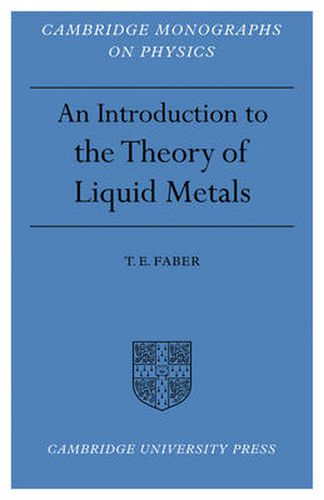Readings Newsletter
Become a Readings Member to make your shopping experience even easier.
Sign in or sign up for free!
You’re not far away from qualifying for FREE standard shipping within Australia
You’ve qualified for FREE standard shipping within Australia
The cart is loading…






This 1972 book brings together the results of a decade of research into the physics of liquid metals and alloys, a subject of growing interest to physicists, metallurgists and materials scientists at the time. It covers a wide range of phenomena, and for the benefit of newcomers to the field, Dr Faber provides a clear exposition of the physical properties involved, and the relevant theoretical arguments are developed in sufficient detail for an experimentalist who carries rather little in the way of mathematical equipment to follow them. Experienced researchers will appreciate Dr Faber’s critical approach and the many previously unpublished results which he has included. The mass of experimental data which he has brought together and the comprehensive bibliography will make the book of great use to readers of both classes.
$9.00 standard shipping within Australia
FREE standard shipping within Australia for orders over $100.00
Express & International shipping calculated at checkout
This 1972 book brings together the results of a decade of research into the physics of liquid metals and alloys, a subject of growing interest to physicists, metallurgists and materials scientists at the time. It covers a wide range of phenomena, and for the benefit of newcomers to the field, Dr Faber provides a clear exposition of the physical properties involved, and the relevant theoretical arguments are developed in sufficient detail for an experimentalist who carries rather little in the way of mathematical equipment to follow them. Experienced researchers will appreciate Dr Faber’s critical approach and the many previously unpublished results which he has included. The mass of experimental data which he has brought together and the comprehensive bibliography will make the book of great use to readers of both classes.